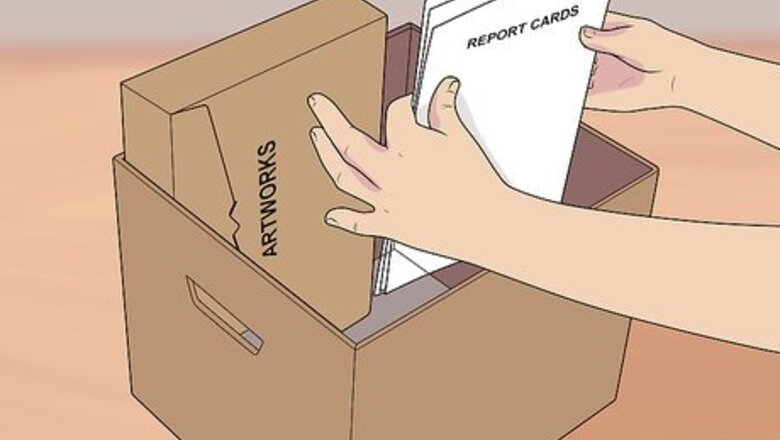
views
Recording the Milestones
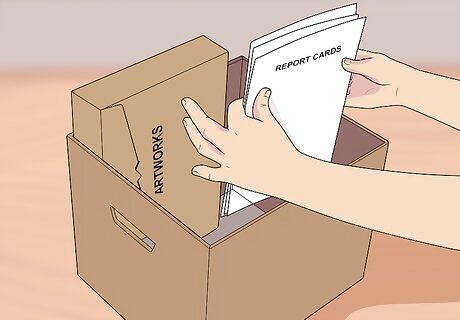
Collect schoolwork and other memorabilia every day. Start collecting the schoolwork your child brings home in a secure place. Get a storage box, file organizer, or a bin with a lid for papers. You can store artwork and photos separately in photo or archival boxes. Report cards and notes from the teacher are also good documents to keep. Consider adding other documentation about your child’s school years to the collection. For example, you can clip announcements about your child from school and classroom newsletters or local newspapers.

Photograph and videotape your child. Photographs and videos are important keepsakes that provide a good visual record of your child’s school years. Take photos or videos of your child throughout the year during school events, including plays, sporting events, spelling bees, science fairs, etc. Also pose your child with special schoolwork and artwork, dioramas, and other school projects. You can also photograph close-ups of the projects you especially wish to remember. Mark every photo with the date and a note about the event or project depicted in the photo. Keep copies of class pictures and official school photos. Ask other parents for copies of photos and videos from school events.

Interview your child. Talking with your child about school helps you learn more about their experiences. You can record some of these conversations as interviews and keep the recordings with other documentation of school milestones. Choose a single topic for the interview and prepare your questions in advance. Let your child say whatever is on their mind. This will give you more information about what is important to your child. Topics can include the latest field trip they went on, who their friends are, or which subjects they like. You can find helpful sample questions online. Keep your questions simple. Open-ended or vague questions can be overwhelming. If you cannot video or audio tape the interview, write it down. If your child is too young to write, quote their reactions to special events in their life or to their work. As your child gets older, they might want to write their answers and it will be fun to see their handwriting and spelling in future years.
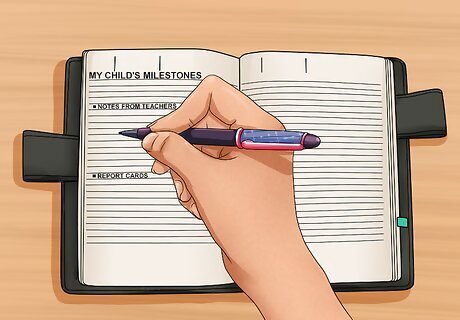
Keep a written journal of your child’s milestones. Journaling is another way you can record milestones and achievements as they happen. You do not need to write a lot about each milestone, but record what it was and the date, as the important thing is to keep a written record you can look back on to remember those milestones. You can save report cards, notes from the teacher, etc. in a journal with pockets. This journal can be a physical notebook, but it can also be a smartphone app.
Organizing the Materials
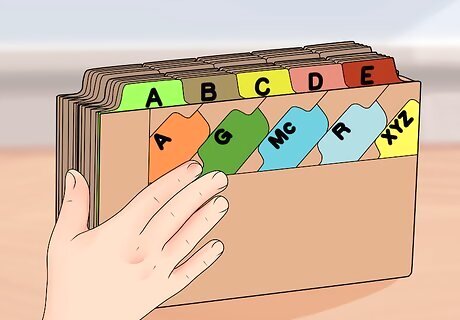
Keep all of your documentation together. It will be easier to find and organize your documents when you store everything in one place. You might not have time to organize your documents regularly. As long as they are in the same place, it will be easier to sort and organize them when you are ready to do so. Put your documents in a location that's easy to access so you can add to it throughout the school year. Choose a place out of the way of small children's hands (to avoid items being destroyed!). Review and sort through the documents on a regular basis.
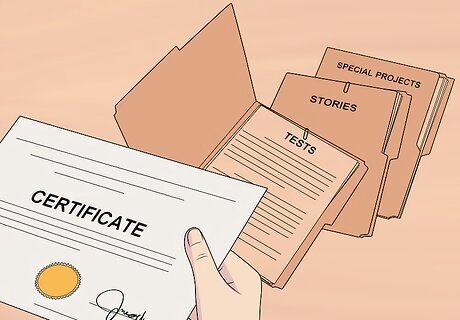
Decide which schoolwork is worth keeping. Once you start collecting your child’s schoolwork, you will need to choose which items to keep or you may be overrun with material. Begin by selecting items that you will want to look at in the future, especially any work that you really like. You might choose to only keep specific kinds of materials, like tests, stories that have a special connection, special projects, and certificates and awards. Involve your child in the process and ask which schoolwork and projects they want to keep. You might need to limit the number of items they are allowed to choose or they might want to keep everything. Do not keep any duplicates.

Talk to teachers and other parents. Learning how other people organize schoolwork can give you some helpful ideas. Let your child’s teachers know that you are collecting examples of educational milestones and ask what they think are important documents from their classes. You can also ask other parents about the types of schoolwork they keep and how they store it. If your child is in a class with their children, you can also suggest sharing photos and videos about your children’s school year. Teachers’ classroom displays can give you ideas for organizing your collection of documents. Your child will likely want to keep any of their work that the teacher displayed.
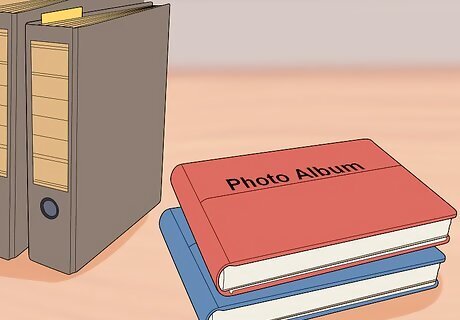
Organize materials into binders and photo albums. Putting your documents into binders and photo albums is a simple way to organize them. It will be easier to look back on your child’s schoolwork when it is neatly arranged in a binder or album than if it is in a box. You can organize documents and memorabilia by grade level, educational subject (math, science, English), or by type of material (tests, report cards, stories). Photo albums can focus on specific events, like school plays. To organize materials into a binder, insert your documents and mementos into page protector sheets and arrange those in the binder in chronological order. Include descriptions, notes, and anecdotes to explain the personal milestones in your child’s life. CDs, DVD-ROMs, or flash drives with recordings, photos, and videos can also go in the page protector sheets. Label the outside of your binders and photo albums so you will be able to identify the contents easily.
Displaying your Documents

Make a scrapbook. Scrapbooking lets you keep and creatively display items from school, including the smallest memorabilia. Your scrapbook can document the whole school year or you can focus the contents on specific subjects or events. Scrapbooks generally include photos, documents, notes, and decorations. Notes, decorations, and titles on pages of the scrapbook are the creative elements that help you personalize the milestones you are documenting. You can buy scrapbooking kits or you can make you own.
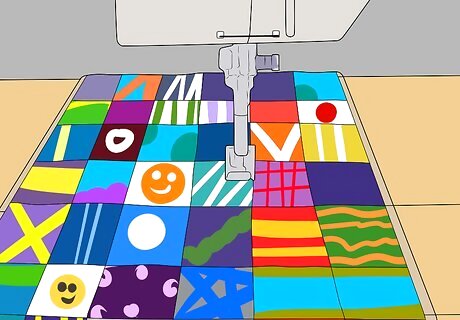
Sew a memory quilt. You can create a memory quilt featuring your child’s photographs, artwork, and even copies of stories or tests. A quilt will have fewer documents than in an album, binder, or scrapbook, so it is also a good way to focus on an event or a very special set of documents. The quilt squares are documents and photographs that are transferred to fabric squares.. You can send photographs, including photos of schoolwork and artwork, to some photo websites, where they will create a memory quilt for you. A memory quilt makes a great gift for your child when they reach an educational milestone such as moving from elementary to middle school.
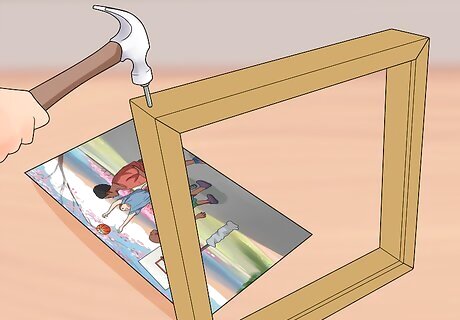
Create a shadow box. A shadow box lets you display fewer items than you can in a scrapbook or even a quilt. This is a good way to display items from an event at school, a special project, or field trip. You could also create an overall picture of the school year with your child’s class photo, final report card, and a few examples of their work. You can make a shadow box yourself or buy one online or at a craft store.
Recognizing Major Milestones
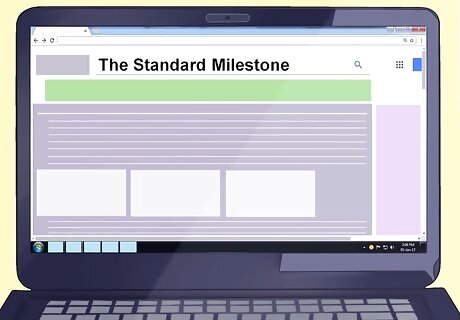
Read up on standard milestones at each stage of your child’s education. The standard milestones indicate what children should be capable of at different stages of their education. Knowing what the milestones are for each grade level can help you better understand how your child is doing in school. You can also use this knowledge to help you decide which schoolwork best documents your child’s progress towards specific milestones. Check the websites from your school, school district, or state’s Board of Education for lists of milestones. Ask your child’s teacher or principal for resources that can help you identify typical milestones. Consult with your pediatrician about the guidelines they use. Your pediatrician can also tell you how well they think your child is meeting milestones. Search online or visit your local library to look for lists of educational milestones for your child’s age or level of development.
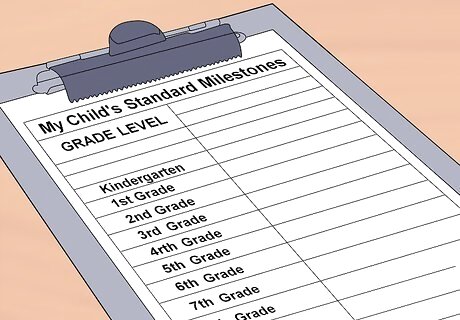
Monitor your child’s milestones. By comparing your child’s progress with standard educational milestones, you can better track their academic development. Tracking your child’s milestones can let you know if they are performing at grade level. It can also alert you to any learning delays or let you know if your child is achieving above their grade level. Start by making a checklist of standard milestones for each grade level and updating it as your child reaches those milestones. Report cards and results from standardized testing can help you monitor milestones. Check in regularly with your child’s teachers about how your child is doing. You can ask about specific indicators of your child’s progress, like lexile levels or college readiness. Ask your child to perform short tasks associated with specific milestones, like solving mental math problems or describing the characters in a story. Describe your child’s progress in school and any concerns you have in your journal of your child’s milestones.
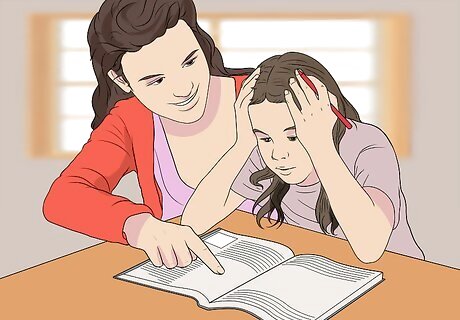
Find academic support. If your child is not reaching expected milestones, they may not have the knowledge and skills needed for them to go on to the next level of learning, including the next grade level. This can also be a sign of developmental delays. Extra academic support, including tutoring, can help your child do their best in school. Speak with your child’s pediatrician if you want your child to be tested for developmental delays. Consult with the school or school district about tutoring, or other assistance for children with learning delays.











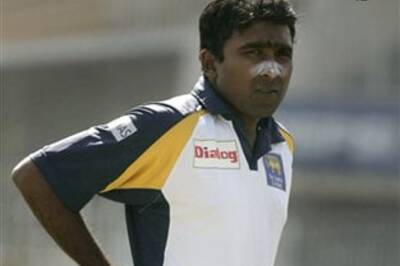
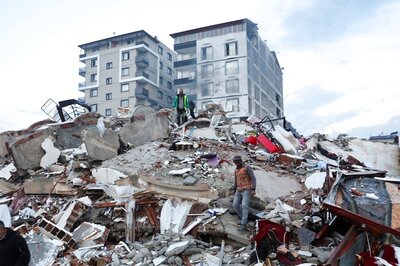
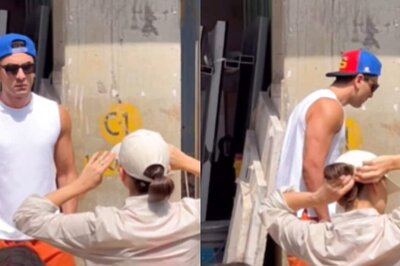


Comments
0 comment